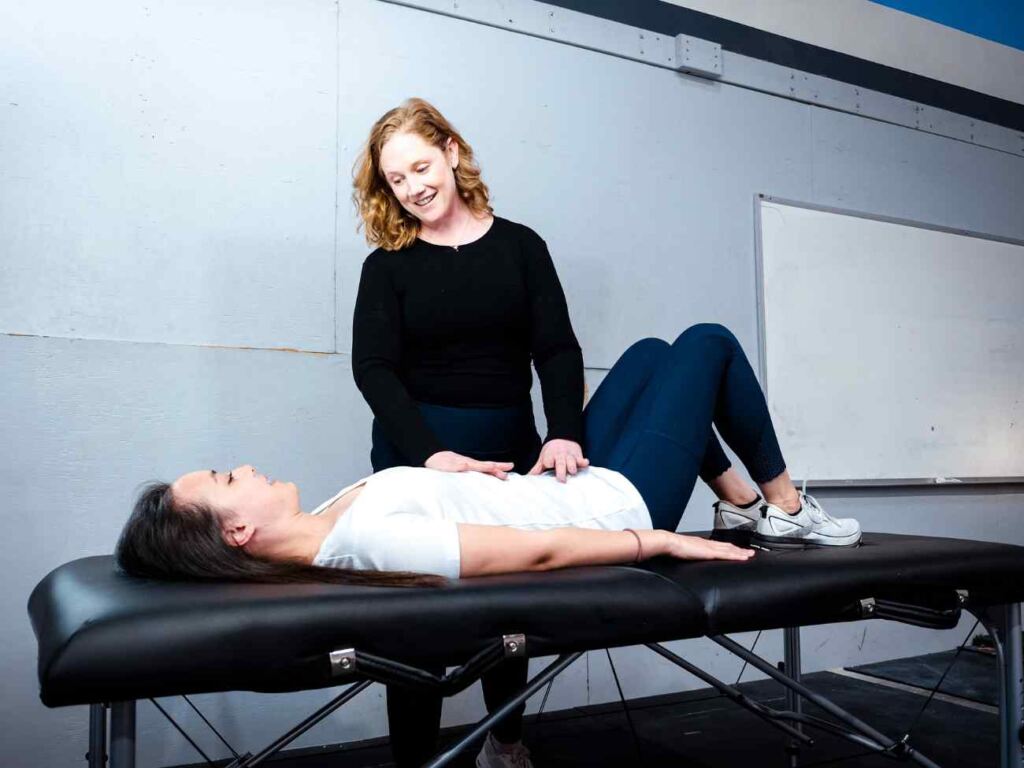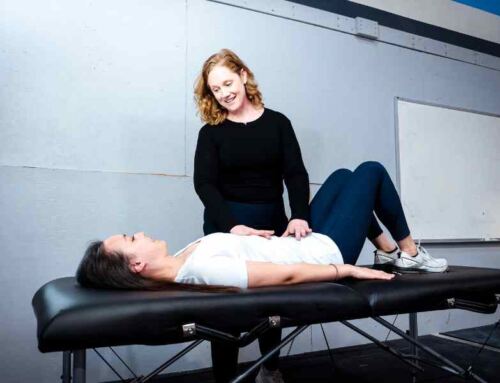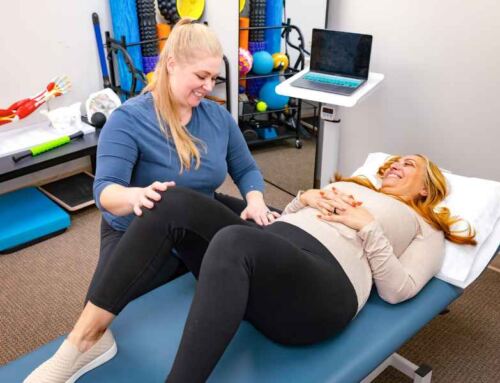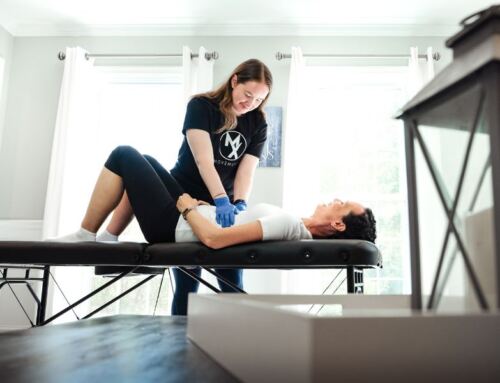When we talk about menopause, the same few symptoms tend to dominate the conversation: hot flashes, night sweats, changes in your cycle. But there’s a whole world of physical changes happening, particularly in the pelvic floor, core, and musculoskeletal system that often go unrecognized until they start to interfere with daily life.
As a physical therapist who specializes in pelvic health, I see firsthand how the transition through menopause can quietly and quickly reshape a person’s body. The good news? There is help!
What’s Really Happening During Menopause?
Menopause is defined as 12 consecutive months without a menstrual period, typically occurring between ages 45 and 55. But a large shift often happens during perimenopause, the years leading up to that milestone.
The key driver? Estrogen.
Estrogen levels begin to fluctuate and then decline over time, and with that, a multitude of changes begin in multiple body systems:
- Connective tissue and muscles lose elasticity and hydration and this can contribute to joint pain or tendon pain.
- Bone density begins to decrease, which can lead to osteopenia or osteoporosis.
- Pelvic floor muscles adapt to these changes, sometimes causing weakness or becoming overactive.
- The vaginal and urethral tissues become thinner and drier which can contribute to an increase in urinary symptoms.
The Pelvic Floor’s Silent Shift
Let’s talk a bit more about the pelvic floor.
These muscles sit like a hammock at the base of your pelvis and are responsible for:
- Supporting your bladder, uterus, and rectum
- Assisting in control of our bowel and bladder (and no, peeing when you laugh or sneeze is not just part of getting older)
- Sexual function
- Core and posture stability
As estrogen declines, the pelvic floor muscles change too. In some cases, the muscles reduce their strength and tone, contributing to less activity. In some cases, the muscles may increase in tension as a way to compensate for other changes, and increase in overall tone and tension.
For some, this may contribute to leaking urine with activity, a sense of heaviness or bulging (signs of prolapse), or painful intercourse due to tissue changes and muscle guarding.
As a physical therapist that works with women throughout midlife, I hear this all the time: “this is just part of aging.”
And while yes getting older is in fact part of life, suffering through these insufferable changes is not something you just have to live with.
There is so much that pelvic floor physical therapy can do.
Menopause Also Affects the Way You Move
Here’s another fun fact: Estrogen affects more than reproductive tissues.
It also plays a major role in muscle recovery, joint lubrication, and tendon health. This is why you might notice new onset joint pain, especially in the shoulders, hips, or low back.
Tendon issues may creep up, symptoms like achilles pain or heel pain (plantar fasciitis).
With changes in our muscle system, you may notice overall decreased strength and endurance or changes in balance.
These changes can impact everything from your workout routine to just steadiness during basic tasks like navigating curbs or climbing stairs.
As a women’s health specialty physical therapist, I focus on rebuilding functional strength and control so you can move with confidence again.
How Physical Therapy Can Help
A menopause-informed physical therapy approach focuses on a full body approach to care.
- Pelvic floor muscle assessment (for strength, tension, and coordination)
- Core strengthening and balance work
- Mobility and joint protection strategies
- Breath-work and nervous system regulation
- Education about hormone effects and lifestyle strategies to support your during this transition
Even a few targeted sessions can help you feel stronger, more stable, and allow you to take back a little control. Menopause should not be a hard stop to doing what you love, but maybe a small blip or shift to allow you to keep moving and celebrating all that lies ahead.
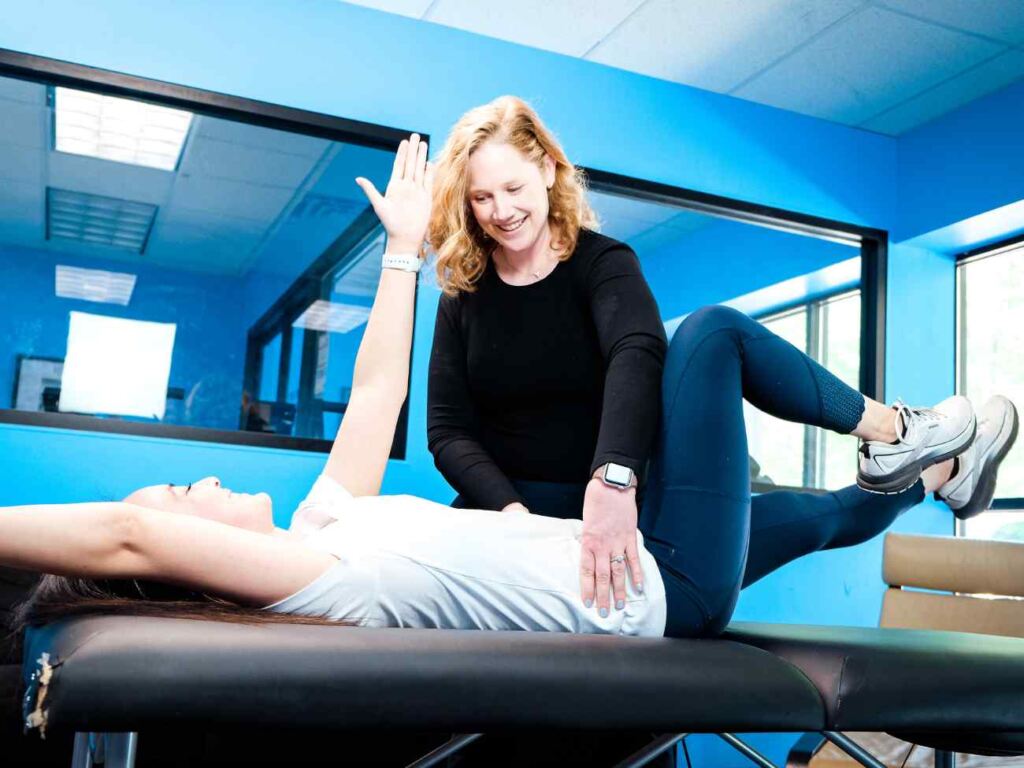
A Real-Life Example
“I didn’t know there was even something that could help with this” said one client in her early 50s.
She came to me with urine leaks and pain with intimacy she hadn’t experienced before. She had no idea these were all connected to hormonal changes and pelvic floor dysfunction.
After 6 sessions, she made improvements in pelvic floor and core function, learned how to manage intra-abdominal pressure, and no longer experienced urine leaks or pain with intimacy.
More importantly, she felt empowered to take back control of her body!
Key Takeaways
- Menopause affects more than hormones. It changes how your muscles, joints, and connective tissue function.
- The pelvic floor is especially vulnerable, but symptoms are treatable with the right care.
- You don’t have to live with leaks, pain, or weakness. PT can help.
- It’s never “too late” to start paying attention to your pelvic health.
If you’re in the peri/menopause transition and feeling like your body is changing, know you are not alone, and you are not powerless.
A physical therapist trained in pelvic health and menopausal care can help you build strength, ease discomfort, and understand your body in this new chapter.
Whether you’re just starting perimenopause or deep into postmenopause, it’s never too late to reclaim your pelvic health and overall well-being.
About the Author
Dr. McCaul Butcher is a physical therapist based in Leesburg, specializing in perinatal wellness, pelvic health, and orthopedic rehabilitation. She is passionate about bridging the gap between orthopedic and pelvic health care, offering individualized, whole-body treatment for clients at every stage of life. Outside of work, Dr. McCaul enjoys weightlifting, hiking, beach trips, and time with her husband and two sons.


